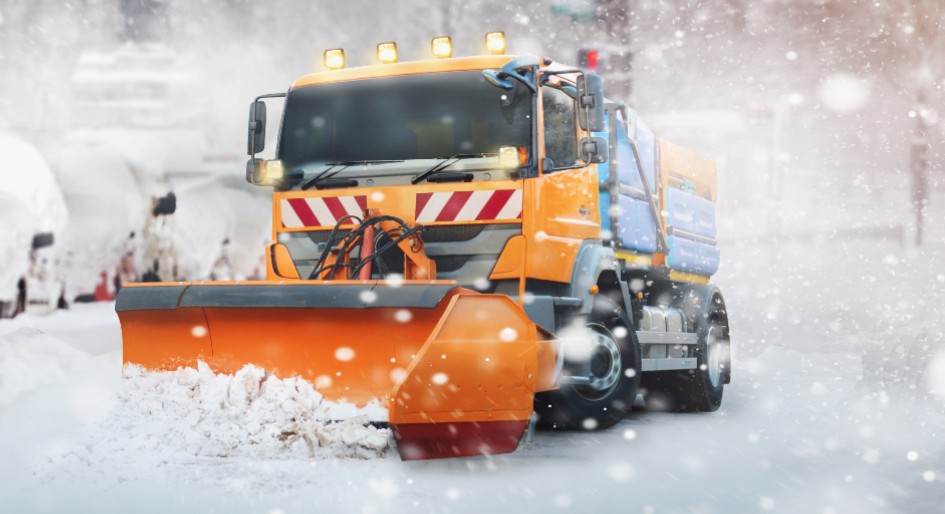A hard global insurance market has been affecting all types of service providers across Canada, but one in particular is feeling the chill and facing a crisis point, the effects of which will trickle down to private property owners and condo corporations.
Two years ago, Tony DiGiovanni, executive director of Landscape Ontario, began receiving weekly phone calls from snow and ice contractors. Their insurance premiums were escalating, and some, who spent years building their business, couldn’t obtain any insurance at all.
“It started off at 25 per cent, then you’d hear stories about 40 per cent, then 600 per cent,” he says. “It’s a crisis not just for members, but eventually, if this doesn’t get solved, who is going to keep Ontario safe? It will affect everybody.”
There is a confluence of factors. At the heart, is a heightened amount of slip-and-fall claims. Fewer insurance companies are willing to insure risky businesses now, but with snow contractors, it’s largely due to this particular liability that property owners and managers pass on to the contractor through the Occupiers’ Liability Act (OLA). Because snow and ice contractors assume control over a property during a contract, they are deemed at fault if someone is injured from a slip-and-fall.
Terry Nicholson, vice-president of Clintar Landscape Management and chair of Landscape Ontario’s Snow and Ice Sector Group, says the costs to fight these claims are so expensive that insurance companies are settling them before they reach the court.
“Because there have been so many claims coming in year after year, the rates are getting out of control; they’re not sustainable,” he says. “In some cases, contractors are paying 15 per cent of their revenue for just liability insurance.”
David Amadori, senior vice-president of commercial practice at Marsh Canada, provides insurance to the industry. He says snow and ice contractors have always faced insurance challenges, even in the best of times. But with commercial insurance premiums rising in general, this class is “firmly on the outside looking in when finding favour with insurers.”
He also says condos are among the riskiest types of snow removal to engage with when it comes to frequency of claims. “In over 10 years, I’ve seen more slip-and-falls at condo corporations than I do at some large retail locations,” he says.
As snow contractors face insurance woes, condo corporations are equally challenged,” says Amadori. Owners who slip-and-fall on their condo property are consequently suing themselves through any claims. “The condo corporation policy will pay for that, but ultimately, when that happens, condo insurance grows more expensive, and the maintenance fees rise,” he says. “It’s a self-defeating cycle.”
But while condo corporations have those fees at their disposal, contractors can’t blend those costs into their operations, he adds. To raise their own fees could mean losing a client who might look for business elsewhere.
Behind such incessant claims, at condos or other properties, is a heightened environment of contingency lawyers who offer free representation to claimants, with no recourse if a claim goes away, says Amadori. On the other hand, legal costs must still be incurred by contractors who are forced to defend themselves—costs that are paid for by the contractor’s chosen insurance company. “Even a victory for a contractor in the current environment costs them money, and a loss for the claimant costs them zero,” he says.
As DiGiovanni notes, many claims, in general, tend to be settled for $20,000 to $30,000, in place of lengthy and costly legal battles. “The bigger companies are growing bigger and the little companies are being squeezed out because they can’t afford it.”
Costs must then be passed down to condo corporations, with some property managers facing a smaller pool of snow contractors as the winter season arrives.
Val Khomenko, principal condominium manager for Regional Group in Ottawa, says the crisis of insurance premiums in the snow removal industry is directly affecting the finances of condominiums and properties, as buildings also face their own insurance crises.
“Smaller contractors are folding and closing shop, left and right. Fees are certainly being raised,” he says. “One of the main complaints we are also getting is the lack of labour force, which naturally affects the deliverables and the service level. Colleagues are reporting similar instances.”
He says fewer smaller snow removal companies combined with higher premiums for all companies creates “a disastrous recipe of significant disadvantage to properties,” which not only use the services of these small contractors, but also can’t afford large increases in contracted maintenance.
Ploughing Away Frivolous Claims
Landscape Ontario’s Snow and Ice Management Sector Group has been working on a number of fronts to help keep contractors in business.
In January 2021, Bill 118—The Occupiers’ Liability Amendment Act, 2020— came into effect in Ontario. The private member’s bill, introduced by Parry Sound-Muskoka MPP Norm Miller, reduced the statute of limitations for claims arising from snow or ice-related injuries from two years to 60 days.
The idea is that it will keep frivolous claims at bay. “Our members were seeing the pattern just before the two years were up—that’s when they’d get the claim,” says DiGiovanni. “Someone was banking on the fact the data would be lost.”
With incidents fresh in mind, contractors can now account for details that could otherwise go missing over time, such as the weather, how much salt was used, and the type of footwear one was wearing during a fall.
Results of this amended legislation will likely surface this summer—after the 2021-2022 snow removal season, which typically lasts until mid-April when contracts end. Amadori says by mid-June, that 60-day window will have expired, and insurers who had snow removal liability on their books should have an understanding of the exposure that took place.
“My expectation is that the data set that exists after this winter could be quite compelling,” he says. “It could materially reduce the amount of slip-and-falls that have been brought forth towards snow removal contractors, ultimately reduce the frequency of claims and, in turn, reduce the total costs associated with insuring this sector.
“In addition, the erosion of risk associated with the industry from an insurer perspective could attract more insurance capital to the sector creating downward pressure on rates with more options for contractors.”
A First-Of-Its-Kind Standard and New Models
As a shield from liability, the snow and ice management industry developed a standard form contract to clearly delineate the scope of work. It also continues to educate its members about the value of documentation. Amadori points out there is also more technology now that allows for time-stamped, concrete data to help support the defence of a contractor in the case of a frivolous claim.
A self-insurance retention model, inspired by the elevator industry’s own experience with frequent claims, is another option. About 12 large snow contractors who couldn’t obtain insurance are pooling their insurance premium to cover their initial number of claims, and are more able to get catastrophe insurance. What isn’t spent from the investment over a period of five years is paid back.
“With that model, they’re actually working to be better companies, as well,” says DiGiovanni. “Now, the claims come under their premium, so naturally, they have to be more inclined to look at all the details: doing the best job they can from a risk management perspective.”
More recently, the group of contractors who started the self—insured retention model has approached the Canadian Standards Association (CSA) to develop a nationally recognized standard of care for snow and ice operations. “Often what members have told me over the years is that judges don’t know what is a good standard to compare things to; they don’t have data so they don’t understand,” says DiGiovanni. “How do you solve a claim when there is no standard to judge that claim on?”
The multi-stakeholder collaboration, supported by Landscape Ontario and the Canadian Nursery Landscape Association, could take over a year to publish, but it would serve as proof, showing a contractor fulfilled a job under certain criteria and met the industry standard.
Through a model in New Hampshire, businesses that are part of the Green SnowPro accreditation program are protected from liability unless they are negligent.
The idea is that by using less salt, a known groundwater contaminant, there is leeway for contractors who prove they have properly completed their job. Landscape Ontario is pursuing this model, having joined the Freshwater Roundtable.
The alliance, with members from conservation authorities, environmental protection groups, property owners and managers, multiple levels of government, legal representatives, insurers and contractors, is proposing legislation that will make it mandatory for snow operators to become Smart about Salt (SAS) accredited and, thus, protected from liability unless negligent. “We will know in the next six months if that will go anywhere,” says DiGiovanni.
Salt has a questionable history as it stands. Not only does it harm freshwater systems, but it can be tracked through condo buildings, causing damage and higher maintenance costs.
Nicholson says it’s used far too liberally. “But it’s our only defence,” he says. “Most of us are landscapers and we take care of green things first. We know that salt is damaging and we want to reduce the impact we’re having on the environment, but because of the fear of ending up in litigation, we tend to over apply.”
Without giving salt the sufficient time it requires to work properly, he says it becomes more of a traction aid than a de-icer. If change doesn’t come through the OLA, then the exorbitant amounts of salt may likely never cease.
What is raising financial alarms is also cause for environmental advocacy, and at the crux of these concerns is human welfare.
“We’re at hospitals, schools, government buildings, recreational centres, nursing homes, condos, retail centres and other workplaces—private contractors do most of the snow removal in the province,” says Nicholson. “If they are leaving the industry, and insurance companies aren’t insuring new companies, then ultimately, it affects the safety of everyone in the province.”
This story originally appeared on the cover of CondoBusiness’ November/December 2021 issue.








